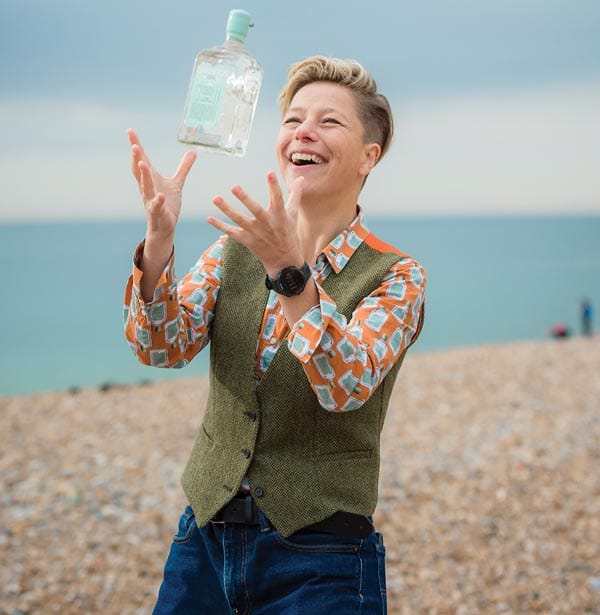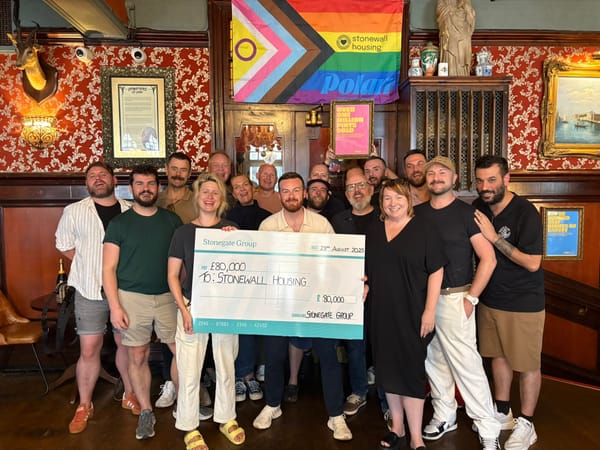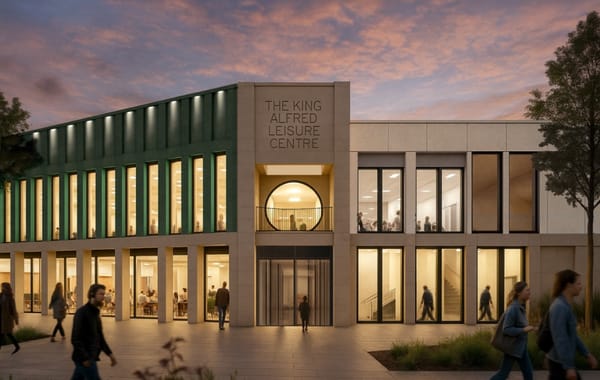FEATURE: Still Life With Gin
Gin is a shortened form of the older English word genever, which came to us via Dutch – hence the phrase ‘Dutch courage’. Hove dipsomaniac, Eric Page, catches up with dishy distiller and broadcaster, Kathy Caton, from Brighton Gin to talk about her still life.

Gin is a shortened form of the older English word genever, which came to us via Dutch – hence the phrase ‘Dutch courage’. Hove dipsomaniac, Eric Page, catches up with dishy distiller and broadcaster, Kathy Caton, from Brighton Gin to talk about her still life.

I think we’re definitely queer in attitude with a diverse workforce – a significant number of our team are LGBT+, we range in age from 20 to mid 70s, more than 70% identify as female. We’ve got a firm community-led ethos too: every year we make a slightly different Pink Brighton Gin to raise funds for the Rainbow Fund, and to give to unsung community heroes to say thank you for all their hidden hard work. We’re trying to embody the spirit of Brighton!
We do indeed distil in copper, using a pot still (the copper helps with purification) which in combination with using absolutely the best quality ingredients means we’ve done all we can to help you dodge a hangover!
We’d love our juniper to be local. Juniper is a tough shrub, a member of the pine family, which is why in my early gin experiments when I over boiled the juniper it smelt of Domestos! Juniper used to grow over the South Downs – I dream of re-wilding a bit, but it takes 15 years or so to come to fruition – that’s a long wait.
We spent a long time perfecting our recipe so I’m pretty precious about it! It’s a simple process, but like making a souffle, there are 3,000 different ways you can stuff it up.
‘Botanicals’ are the herbs, berries, citrus and so forth that give gin its unique taste and are what allow for such variety. Legally, to be called ‘gin’, it must simply taste predominantly of juniper – anything else is fair game!
On balance, it would have to be Hogarth. It’s worth taking a look at Gin Lane’s companion piece, Beer Street, where everyone is plump, well-fed and churchgoing. It was meant to be viewed first to make Gin Lane all the more shocking.
We’re definitely Brighton’s first legal distillery. I’m really surprised actually that there hasn’t been a distillery here before us. One factor I think is that we’re in an area of the country with an amazing brewing heritage so those have taken precedence. Also, I think Brighton is focused on the consumption rather than the production of booze until recently.
That was an extraordinary, brilliant moment. So much of what we do at Brighton Gin is unglamorous – there’s a lot of heavy lifting and fierce hours, so to receive that recognition was amazing. It meant a huge amount to us and I’m not ashamed to say there were a few tears (and some popping corks) when we found out.
What a question. So, so many! Upstairs in the Marlborough Theatre for queer culture (Eric, I remember seeing you perform there back in the day), The Bedford Tavern on New Year’s Day or the beach in late summer, watching the setting sun sharing a bottle of something cold.
We’re keen that drinking Brighton Gin means fun, whether that’s at a sophisticated cocktail party, a mate’s house, in the pub or over dinner.
The interest in provenance, quality and localism has been driven by what’s happened in craft brewing – craft spirits is absolutely following that. With gin in particular, there’s so much room within the category, an infinite variety of botanicals and combinations, the different methods you can use. There are over 500 British gins now, but there’s room for everyone. I love that gin is now something that’s enjoyed across the gender and age spectrum – when I was at university, I was laughed at for drinking ‘my nan’s drink’. Now it’s enjoyed by people across the generations, all drinking it in different ways.
I do! I’m a sucker for giant copper stills and people with vast space and handsome flint barns as tasting rooms. One of the issues for us is that distilleries ideally need a lot of space and a lot of headroom and those spaces aren’t available to us.
Many, many, they’re such a key part of learning – from early distillations that tasted like Dettol, a minor fire patted out with oven gloves that then started smouldering, to someone ordering 1,056 of the wrong bottles that we couldn’t return – we’re still trying to find creative ways of using them up.
Shamefully, in Paddington 2. I blame jet-lag and white wine for that one.
I’d go with Dorothy Parker’s lines on a gin martini: “I like to have a martini, two at the very most. After three I’m under the table, after four I’m under my host”.







